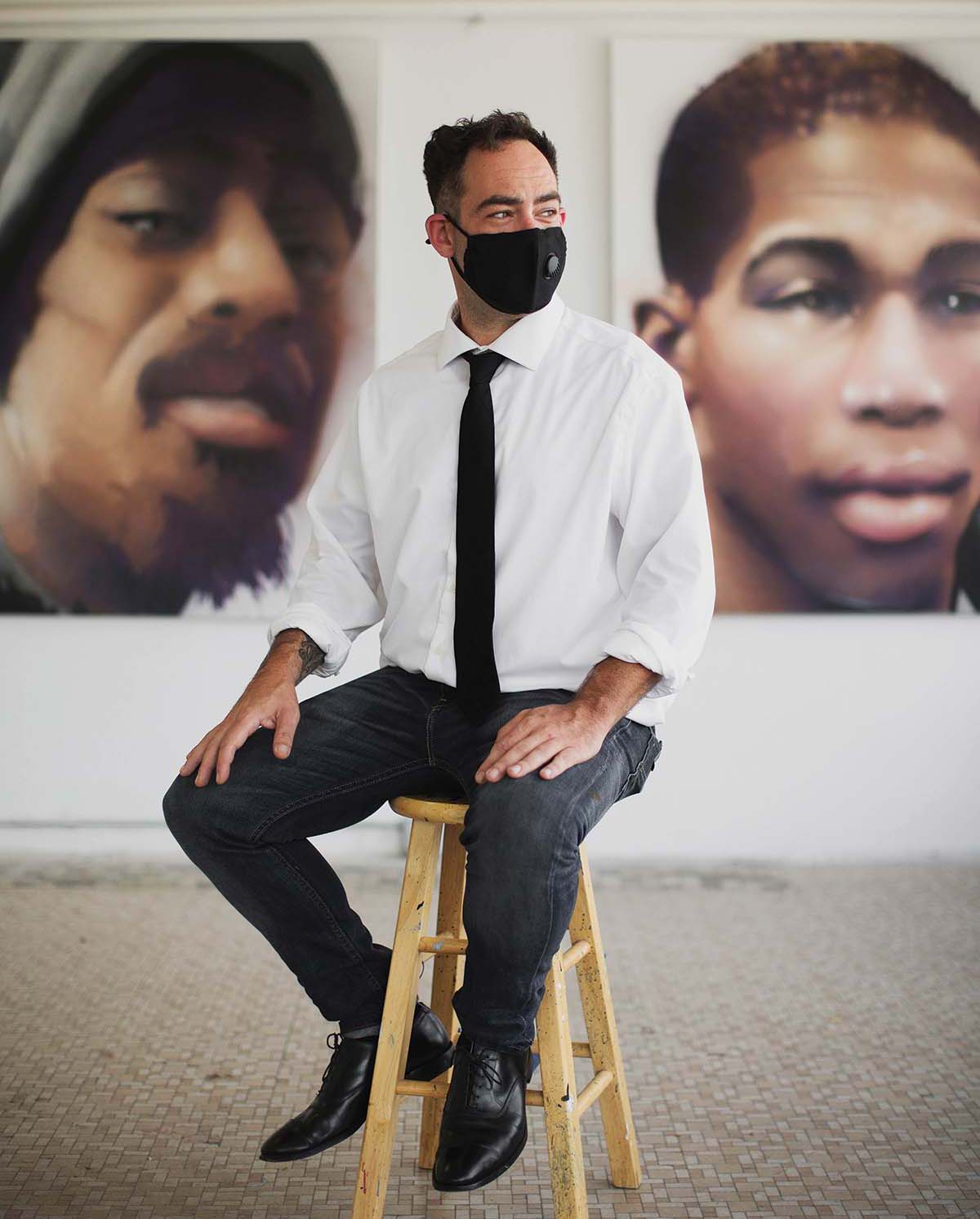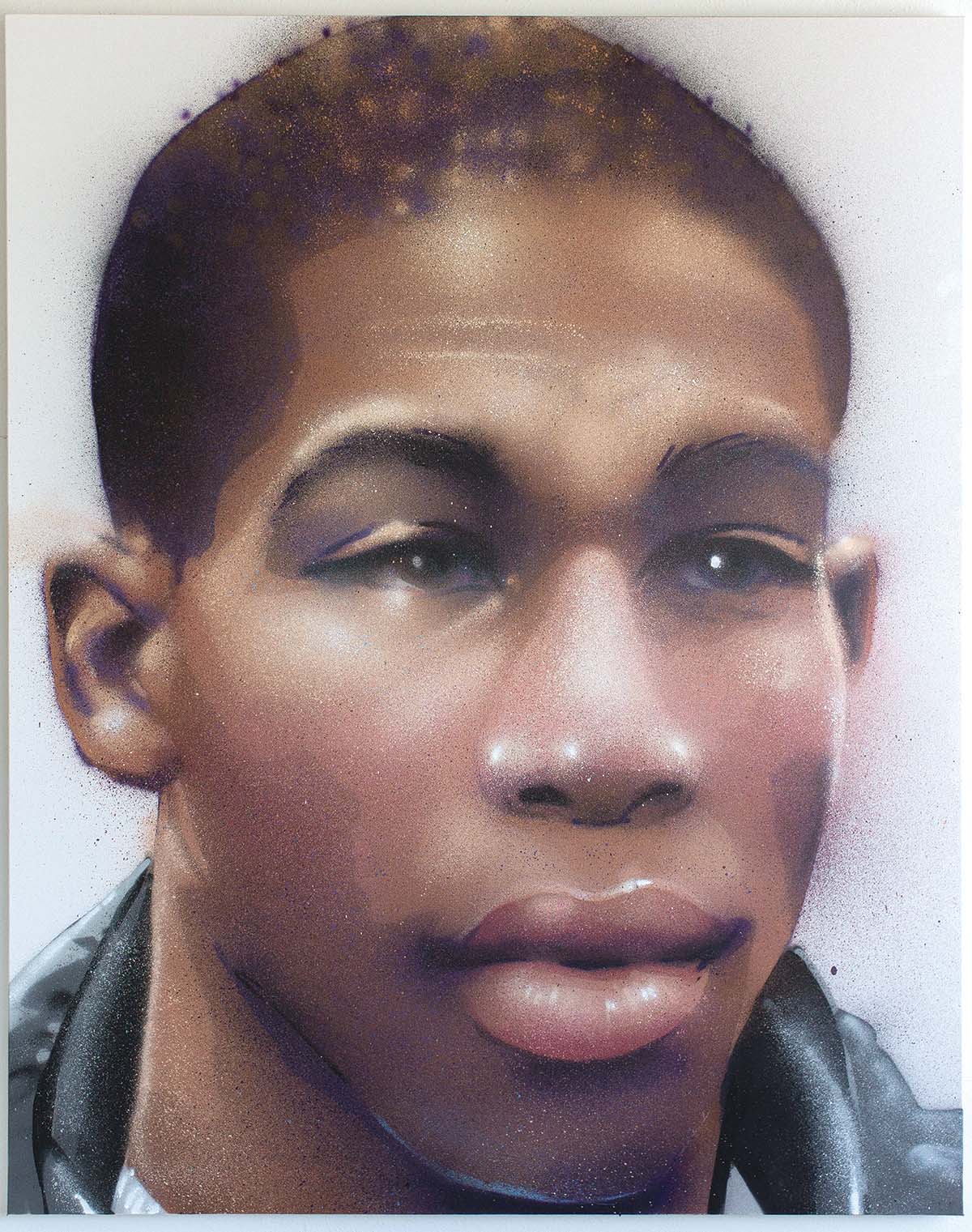
Dustin Spagnola, an Asheville-based muralist of widespread acclaim, has never been shy about using art to address social issues. When protests erupted in Asheville and around the world after the death of George Floyd, Spagnola utilized his creativity to comment on a pivotal moment in American history.
He did so by creating stunning murals of Black Americans who have died at the hands of police: Jerry Williams, AJ Marion, Breonna Taylor, and Tamir Rice are some of the men, women, and children Spagnola chose to depict in his pieces, which appeared on boarded-up storefronts in downtown Asheville beginning in early June. He and two other well-known local muralists, Gus Cutty and Kathryn Crawford, were instrumental in coordinating the protest art still visible throughout the city.

But Spagnola insists the politically inspired works in this project aren’t about him, or about any other participating artist. The end game is to bring attention to what he calls a “general state of racism” in the United States. “We want to make sure that the focus is on the movement, not on us,” he says. “I can’t say for sure if visual art is a good voice for this anti-racism moment. But painting murals is one way that I’m able to add something to the conversation, to try and lift up other people.”
Spagnola says he wants to depict the five distinct demands of the global Movement for Black Lives (described in full at m4bl.org). But he also keeps it local, emphasizing the 2016 death of Asheville resident Jai “Jerry” Williams. The artist spotlights what many people consider an unjustified use of police force, with a focus on the social-media campaign #justiceforjerry.

“We want to make more space in the street for these types of difficult conversations,” says Spagnola.
The artist has been in Asheville since 2001. He studied art at Warren Wilson College and runs 474 Gallery Studio, where his oil and aerosol portraits greet drivers full in the face when they pull off I-240’s Exit 2 to the West Asheville business corridor.
Away from home, he has completed large-scale commissioned murals in major U.S. cities: New York, Miami, and Kansas City, Missouri. He understands the immense responsibility of making art that’s seen by everyone who passes by.
“Public art is well-suited for commenting on larger social issues,” he says. “I try my best to make comments that are poignant, but not propaganda … [giving] people the ability to learn about an issue themselves.”
Dustin Spagnola, 474 Gallery Studio at 474 Haywood Road, Suite 102, West Asheville, dustinspagnola.com. Protest muralists in Asheville collectively highlight the following groups that focus on the local black community: Hood Huggers (visual art and culture tours, hoodhuggers.com); My Daddy Taught Me That (programs for young men, mydaddytaughtmethat.org); Beloved Asheville (housing, food, medical care, belovedasheville.com); Center for Participatory Change (racial justice, cpcwnc.org), and Green Opportunities (job training, greenopportunities.org).